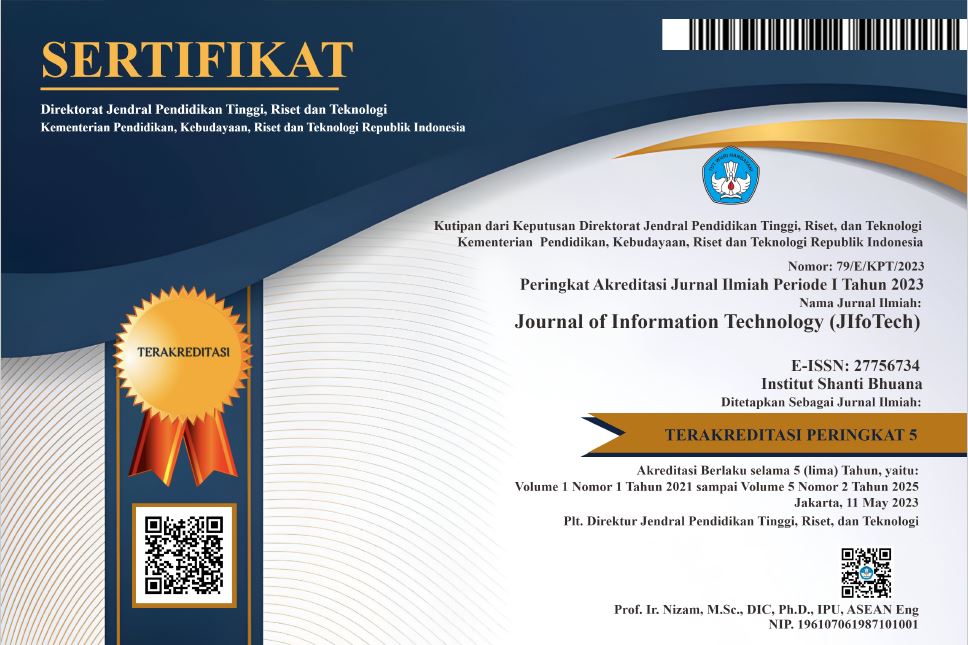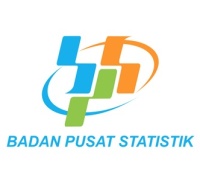Analysis of Landslide Prone Areas in Brebes Regency Using Images Landsat 8 With Inverse Distance Weighted (IDW) Method
Abstract
Brebes is a regency in Central Java Province. Most of the area is in the form of lowlands flanked by the Pemali River and the Serayu River. Therefore, Brebes Regency is one of the areas prone to landslides and other disasters. Therefore, a research will be conducted to analyze landslide-prone areas in Brebes Regency with Landsat 8 imagery combined with the Inverse Distance Weighted (IDW) method so that it can be seen which areas have the potential for landslides. The parameters used to perform the analysis were soil type, rainfall, and slope. The three parameters will be overlaid so that a map of landslide prone areas is obtained. The results of this study are expected to be used by the local government to make preventive measures so as to reduce losses to the local community.
References
W. Warjiyono, S. Aji, and T. I. Permesti, “Sistem Informasi Geografis Pemetaan Bencana Alam Kota Brebes Menggunakan Metode Extreme Programming,” J. Pilar Nusa Mandiri, vol. 15, no. 1, pp. 77–84, 2019, doi: 10.33480/pilar.v15i1.110.
I. Arianti, Soemarno, A. W. Hasyim, and R. Sulistyono, “Rainfall Estimation by Using Thiessen Polygons, Inverse Distance weighted, Spline, and Kriging Methods: A Case Study in Pontianak, West Kalimantan,” Int. J. Educ. Res., vol. 6, no. 11, pp. 301–310, 2018.
A. Kurnianto, A. P. Setiahadiwibowo, and W. S. Giamboro, “Estimasi Sumberdaya Batubara Menggunakan Metode Nearest Neighbour Point, Inverse Distance Weighting, Dan Kriging Pada Daerah Muara Bungo, Sumatera Selatan,” J. Geocelebes, vol. 3, no. 2, p. 75, 2019, doi: 10.20956/geocelebes.v3i2.7580.
N. B. Uly et al., “Analisis Resiko Longsor berbasis Citra Landsat-8 menggunakan Interpolasi Spasial (Studi Kasus : Kabupaten Banjarnegara),” Indones. J. Comput. Model., vol. 3, no. 1, pp. 17–23, 2020.
A. Y. Effendi and T. Hariyanto, “Pembuatan Peta Daerah Rawan Bencana Tanah Longsor dengan Menggunakan Metode Fuzzy logic,” J. Tek. ITS, vol. 5, no. 2, pp. A714–A722, 2016.
K. Sugianti and D. Mulyadi, “Pengklasan Tingkat Kerentanan Gerakan Tanah,” vol. 24, no. 2, pp. 93–104, 2014.
Das, “Definisi tanah,” pp. 1–71, 1995.
W. K. A. B. Brebes and K. Umum, “Gambaran Umum Kondisi Dan Potensi Wilayah Kab. Brebes,” 2010, pp. 1–41.
J. Annisa, S. Sutikno, and Rinaldi, “Analisis Daerah Rawan Longsor Berbasis Sistem Informasi Geografis (Studi Kasus : Kabupaten Lima Puluh Kota, Sumatera Barat),” JOM FTEKNIK, vol. 2, no. 2, pp. 1–8, 2015, [Online]. Available: http://marefateadyan.nashriyat.ir/node/150.
A. Faudzan, S. Suryani, and T. Budiawati, “Perbandingan metode inverse distance weighted (idw) dengan metode ordinary kriging untuk estimasi sebaran polusi udara di bandung,” E-Prosiding Eng., vol. 2, no. 2, pp. 6726–6734, 2015.
S. R. Fitri, E. Saadudin, and B. Pranoto, “Perbandingan Metoda Interpolasi Inverse Distance Weighted (IDW), Natural Neighbour, dan Spline Untuk Perapatan Data Peta Potensi Energi Surya,” J. Ketenagalistrikan dan Energi Terbarukan, vol. 13, no. 1, pp. 27–38, 2014.
P. Talakua, E. Sediyono, and S. Y. J. Prasetyo, “Analisis Rawan Kebakaran Hutan Di Seram Maluku Berbasis Citra Landsat 8 Menggunakan Metode Inverse Distance Weighted,” J. Tek. Inform. dan Sist. Inf., vol. 4, no. 3, pp. 511–520, 2018.
Copyright (c) 2021 Maya Sari, Christian Cahyaningtyas, Sri Yulianto Joko Prasetyo

This work is licensed under a Creative Commons Attribution 4.0 International License.






















